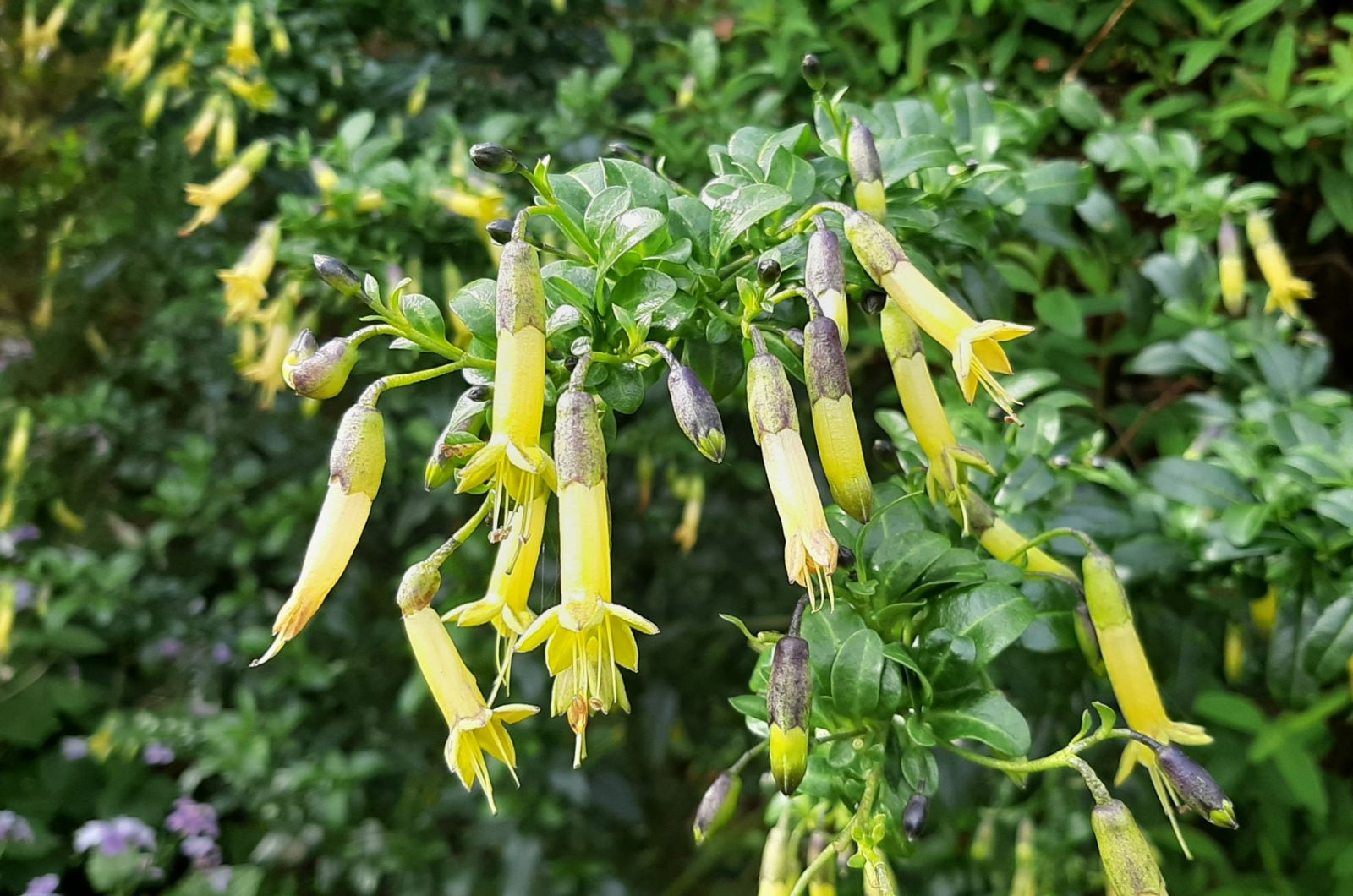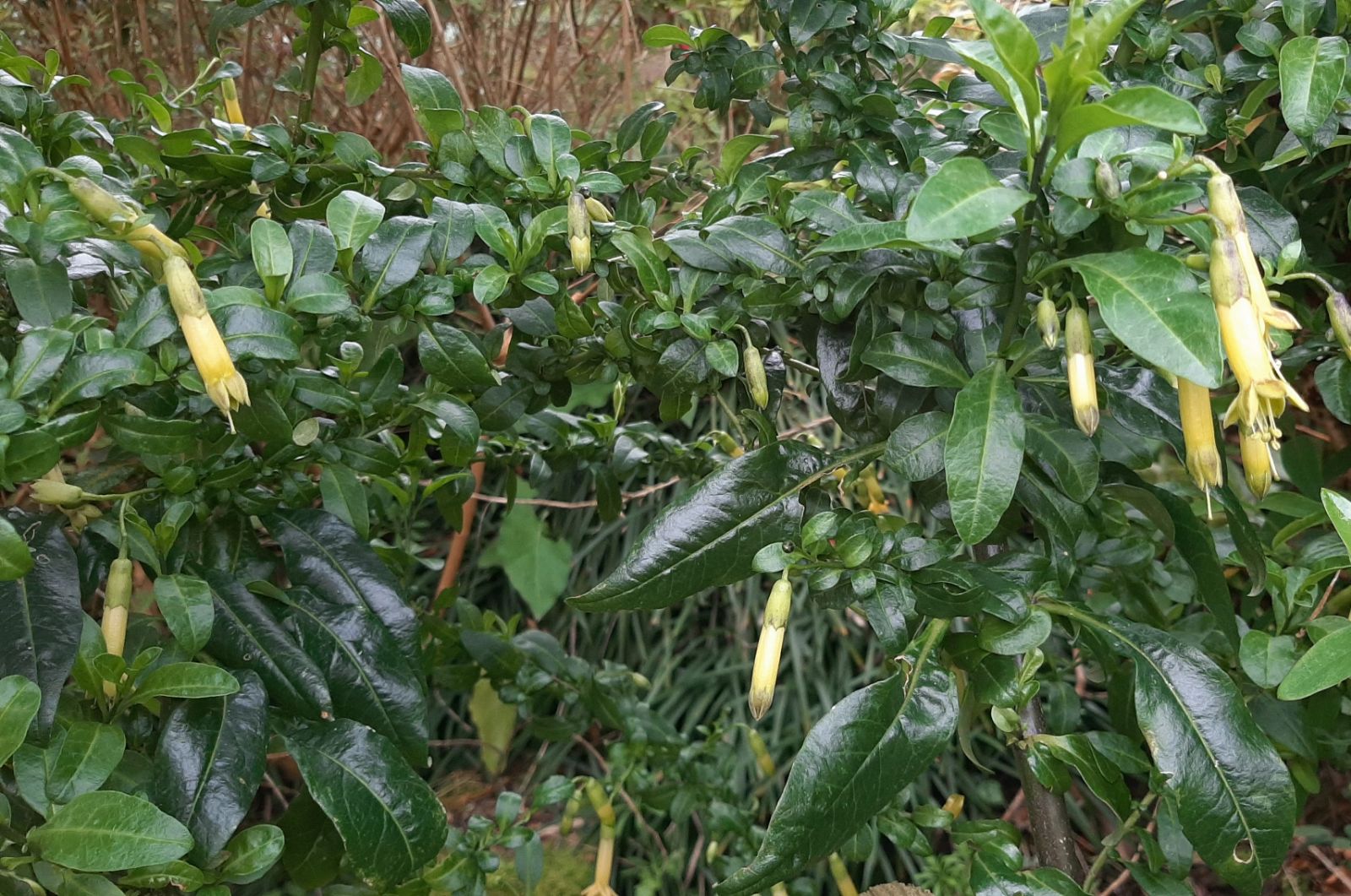Vestia foetida
Credits
Article from Bean's Trees and Shrubs Hardy in the British Isles
Recommended citation
'Vestia foetida' from the website Trees and Shrubs Online (treesandshrubsonline.
Genus
Common Names
- Huevil
Synonyms
- Periphragmos foetidus Ruiz & Pavon
- Vestia lycioides Willd.
- Cantua ligustrifolia Juss.
- Cantua foetida (Ruiz & Pavon) Pers.
Other taxa in genus
An erect, evergreen shrub to about 6 ft high, its stems and leaves unpleasantly scented when bruised; young stems soon glabrous. Leaves alternate, bright green, glossy, slightly fleshy, obovate to oblong-elliptic, mostly 1 to 2 in. long and up to 3⁄4 in. wide, cuneate at the base, shortly stalked, glabrous, entire. Flowers in late spring or early summer on laterals from the upper leaf-axils, nodding. Calyx campanulate, shortly five-toothed. Corolla pale yellow, funnel-campanulate, 1 to 11⁄4 in. long, with a spreading five-lobed limb about 3⁄4 in. wide. Stamens five, exserted. Style one, exserted. Fruit a roundish-ovoid capsule, enclosed in the lower half by the persistent appressed calyx, two-valved, containing numerous small seeds. Bot. Mag., t. 2412.
Native of Central Chile; introduced before 1809 to the Berlin Botanic Garden and thence to Britain about 1815. Although usually regarded as a greenhouse plant, it is nearly hardy in the milder parts and should survive most winters near London with the protection of a wall. It produces fertile seeds which, sown under glass in late winter, will produce plants 2 ft high by autumn. But cuttings are the usual means of increase.
This species is usually known as Vestia lycioides, the name given to it by Willdenow when setting up the genus. But there is no doubt that it is the plant described and figured by Ruiz and Pavon in 1799 in their genus Periphragmos as P. foetidus and must therefore take their epithet. The other species placed by them in Periphragmos belong to Cantua.


